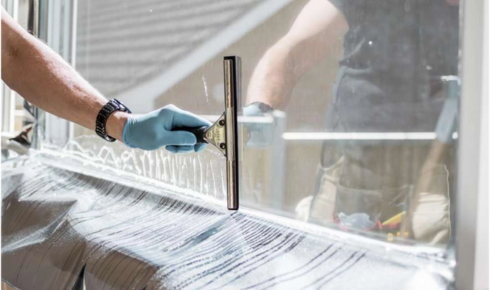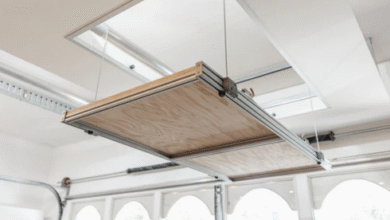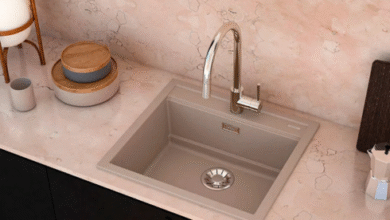How Tintex Transforms Built Environments with Advanced Film Technology

Tintex has earned its formidable reputation in the rigorous world of high-end automotive preservation. The mastery required to flawlessly apply complex films to the curved, unforgiving surfaces of a supercar demands a level of precision that few possess. Now, the company is strategically deploying this specialised skillset—the precise handling of advanced polymer films, the surgical-grade prep work, and the obsessive pursuit of an invisible finish—into the world of architectural design and energy management.
This transition is logical, yet profound. The principles that govern paint protection film and automotive tinting—UV rejection, heat mitigation, and material longevity—are even more impactful when scaled up to the windows of a modern office block or a residential property. Tintex’s architectural division is not just selling a product; it’s delivering a permanent, structural enhancement wrapped in the same uncompromising quality found in their detailing bay. This third article explores their dual approach to architectural glazing solutions: large-scale commercial window film applications and sophisticated, bespoke privacy window film installations.
Commercial Window Film as a Performance Asset
For businesses, the management of solar energy through glass is a multifaceted operational challenge. Excessive solar gain leads to skyrocketing air conditioning costs, while harsh glare compromises employee productivity and comfort. Tintex’s commercial window film is engineered as a high-performance solution that directly impacts a company’s bottom line and its environmental footprint.
The selection and installation of film for a commercial building require an entirely different level of engineering consultancy compared to automotive work. Tintex technicians must consider:
- Solar Heat Gain Coefficient (SHGC): Reducing the amount of solar heat that passes through the glass is the primary cost-saving benefit. High-performance films can reflect or absorb up to 80% of solar energy, dramatically reducing HVAC load and energy bills.
- Daylighting and Glare: The aim is to reject heat without sacrificing natural light. Tintex utilises spectrally selective films that filter out the infrared (heat-generating) and ultraviolet (damage-causing) parts of the spectrum, while allowing most visible light to pass through. This stabilises internal temperature and reduces eye-strain glare, improving the working environment.
- UV Protection and Asset Preservation: Just as UV rays destroy car interiors, they are the main culprit in fading and degrading commercial interiors—from office furniture and carpeting to retail displays and valuable artworks. Commercial window film acts as a powerful barrier, blocking over 99% of UV radiation, effectively preserving internal assets and significantly extending their lifespan.
Furthermore, commercial installations often involve large, multi-pane windows that present inherent security risks. Tintex’s expertise extends to safety and security films, which are substantially thicker polyester layers designed to hold shattered glass together upon impact, offering protection against accidents, extreme weather, and forced entry. By integrating energy management with safety features, Tintex transforms what was once a simple pane of glass into a multi-functional, high-performance building envelope asset.
Designing with Privacy Window Film
At the residential and smaller commercial scale, the application of privacy window film is driven by both practical and aesthetic needs, often requiring a blend of functionality and design sensitivity. Modern living increasingly features large glass facades, creating a conflict between the desire for natural light and the absolute necessity of personal privacy.
Tintex addresses this challenge with a wide catalogue of sophisticated privacy solutions:
- One-Way Vision Films (Daytime Privacy): These films rely on a subtle reflective exterior finish to create a “mirror effect” from the outside during daylight hours. Critically, the view from the inside remains completely unobstructed. This is a popular choice for street-facing residential windows and ground-floor offices where maximum light is desired without sacrificing visual solitude.
- Frosted and Decorative Films: For areas like bathrooms, internal glass partitions, meeting rooms, or front doors, full visual obscurity is paramount. Frosted, etched-look, or patterned privacy window film provides the refined aesthetic of expensive acid-etched glass at a fraction of the cost, completely obscuring the view while still allowing diffused light to pass through. This offers a permanent, elegant solution that is easily cleaned and maintained.
- Blackout and Total Obscurity Films: In highly specific applications, such as data rooms, server storage areas, or certain retail environments, total light and visual block-out is required. These heavy-duty films provide complete opacity and are often chosen for security purposes where the contents of a room must remain absolutely unseen.
The installation of high-end privacy window film demands the same surgical precision as automotive work. The film must be laid without a single speck of dust trapped between the glass and the material, and edges must be trimmed with flawless, straight lines—a critical requirement for large, rectangular architectural installations where any deviation is immediately obvious. The confidence that Tintex brings from its detail-oriented automotive roots ensures that architectural clients receive a finish that is structurally sound and aesthetically perfect.
The Transfer of Mastery
The success of Tintex in the architectural sector is a direct result of its non-negotiable standards developed in the luxury automotive market. This includes:
- Contamination Control: The meticulous decontamination and climate-controlled application practices perfected for Paint protection film are directly transferable to architectural films, preventing trapped impurities that would ruin the optical clarity of a large window pane.
- Material Science Expertise: The team’s deep understanding of UV stabilisers, adhesive properties, and polymer durability allows them to consult expertly on the ideal film for a specific glazing type and environmental exposure, ensuring maximum lifespan and performance.
- Flawless Finish: The expectation for an ‘invisible’ finish on a car carries over to architectural installations. Commercial window film and privacy window film are not meant to look like additions; they are meant to look like an intrinsic part of the glass itself, blending seamlessly into the building’s design.
By extending its services beyond the bonnet, Tintex has demonstrated that mastery of material application is universally valuable. They are no longer simply protecting cars; they are actively improving the efficiency, security, and habitability of homes and commercial spaces across the UK, cementing their position as leaders in advanced polymer application, regardless of the substrate.





